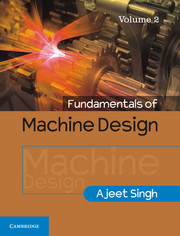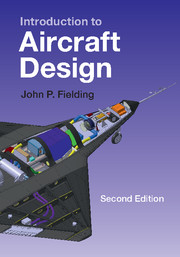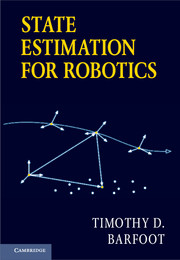Refine search
Actions for selected content:
2002 results in Engineering design, kinematics, and robotics

Fundamentals of Machine Design
-
- Published online:
- 07 August 2018
- Print publication:
- 10 July 2017
-
- Textbook
- Export citation

Introduction to Aircraft Design
-
- Published online:
- 28 May 2018
- Print publication:
- 03 April 2017
-
- Textbook
- Export citation

Advanced Structural Dynamics
-
- Published online:
- 07 November 2017
- Print publication:
- 07 August 2017

State Estimation for Robotics
-
- Published online:
- 09 August 2017
- Print publication:
- 31 July 2017
7 - Earthquake Engineering and Soil Dynamics
-
- Book:
- Advanced Structural Dynamics
- Published online:
- 07 November 2017
- Print publication:
- 07 August 2017, pp 481-564
-
- Chapter
- Export citation
Subject Index
-
- Book:
- Advanced Structural Dynamics
- Published online:
- 07 November 2017
- Print publication:
- 07 August 2017, pp 713-716
-
- Chapter
- Export citation
1 - Fundamental Principles
-
- Book:
- Advanced Structural Dynamics
- Published online:
- 07 November 2017
- Print publication:
- 07 August 2017, pp 1-54
-
- Chapter
- Export citation
10 - Problem Sets
-
- Book:
- Advanced Structural Dynamics
- Published online:
- 07 November 2017
- Print publication:
- 07 August 2017, pp 647-712
-
- Chapter
- Export citation
4 - Continuous Systems
-
- Book:
- Advanced Structural Dynamics
- Published online:
- 07 November 2017
- Print publication:
- 07 August 2017, pp 251-332
-
- Chapter
- Export citation
Contents
-
- Book:
- Advanced Structural Dynamics
- Published online:
- 07 November 2017
- Print publication:
- 07 August 2017, pp vii-xx
-
- Chapter
- Export citation
Unit Conversions
-
- Book:
- Advanced Structural Dynamics
- Published online:
- 07 November 2017
- Print publication:
- 07 August 2017, pp xxix-xxxii
-
- Chapter
- Export citation
5 - Wave Propagation
-
- Book:
- Advanced Structural Dynamics
- Published online:
- 07 November 2017
- Print publication:
- 07 August 2017, pp 333-370
-
- Chapter
- Export citation
Author Index
-
- Book:
- Advanced Structural Dynamics
- Published online:
- 07 November 2017
- Print publication:
- 07 August 2017, pp 713-713
-
- Chapter
- Export citation
Preface
-
- Book:
- Advanced Structural Dynamics
- Published online:
- 07 November 2017
- Print publication:
- 07 August 2017, pp xxi-xxiv
-
- Chapter
- Export citation
2 - Single Degree of Freedom Systems
-
- Book:
- Advanced Structural Dynamics
- Published online:
- 07 November 2017
- Print publication:
- 07 August 2017, pp 55-130
-
- Chapter
- Export citation
6 - Numerical Methods
-
- Book:
- Advanced Structural Dynamics
- Published online:
- 07 November 2017
- Print publication:
- 07 August 2017, pp 371-480
-
- Chapter
- Export citation
9 - Mathematical Tools
-
- Book:
- Advanced Structural Dynamics
- Published online:
- 07 November 2017
- Print publication:
- 07 August 2017, pp 619-646
-
- Chapter
- Export citation
Copyright page
-
- Book:
- Advanced Structural Dynamics
- Published online:
- 07 November 2017
- Print publication:
- 07 August 2017, pp iv-iv
-
- Chapter
- Export citation
Notation and Symbols
-
- Book:
- Advanced Structural Dynamics
- Published online:
- 07 November 2017
- Print publication:
- 07 August 2017, pp xxv-xxviii
-
- Chapter
- Export citation
8 - Advanced Topics
-
- Book:
- Advanced Structural Dynamics
- Published online:
- 07 November 2017
- Print publication:
- 07 August 2017, pp 565-618
-
- Chapter
- Export citation
